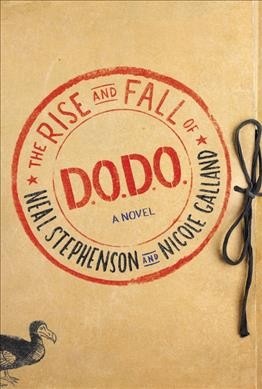 The Rise and Fall of D.O.D.O. opens with a woman setting in a house somewhere in Victorian London. She is taking up her quill to write out the history of the shadowy government organization called D.O.D.O. She is bound and determined that her narrative will destroy that organization. Flash forward to present day Boston where the man from that shadowy government organization is recruiting this woman from Harvard to translate strange historical documents. What fallows is the fascinating process of the creations of a government agency in charge of time travel and how that agency evolves as they figure out how its done.
The Rise and Fall of D.O.D.O. opens with a woman setting in a house somewhere in Victorian London. She is taking up her quill to write out the history of the shadowy government organization called D.O.D.O. She is bound and determined that her narrative will destroy that organization. Flash forward to present day Boston where the man from that shadowy government organization is recruiting this woman from Harvard to translate strange historical documents. What fallows is the fascinating process of the creations of a government agency in charge of time travel and how that agency evolves as they figure out how its done.
The one thing that is kind of the mechanical crux of every time travel novel is how is the time travel accomplished. In Diana Gabaldon’s Outlander series time travel is achieved by magic stones. In Michael Crichton’s Timeline it’s done by accessing the multiverse using wormholes. What’s interesting about this book is that it uses both magic and science to achieve time travel.
Once you get beyond the “how they do it” question, what’s really interesting is the fact that it is a government organization. Not only is this a time travel book where you have to deal with all the problems inherent to time travel, like just your presence in the past might get you killed, but its time travel on the government’s dime. So there’s the issue of who is going to run the program and who is going to fund the program and what do you tell your government overlords when the project goes sideways (which it does frequently). Once you are past the proof of concept stage how do you build the organization and make it self sustaining. All of these are the background noise of the plot and in some cases the plot itself.
Here is the thing that is probably going to scare people off more than anything else: the book is over 700 pages. So when you see the book on the shelf you are going to reflexively think “oh my god how can I possibly read all that?” But I assure you those 700+ pages go fast. The narrative is fast pace and is broken up with diary entries of participants and extracts from other documents.


